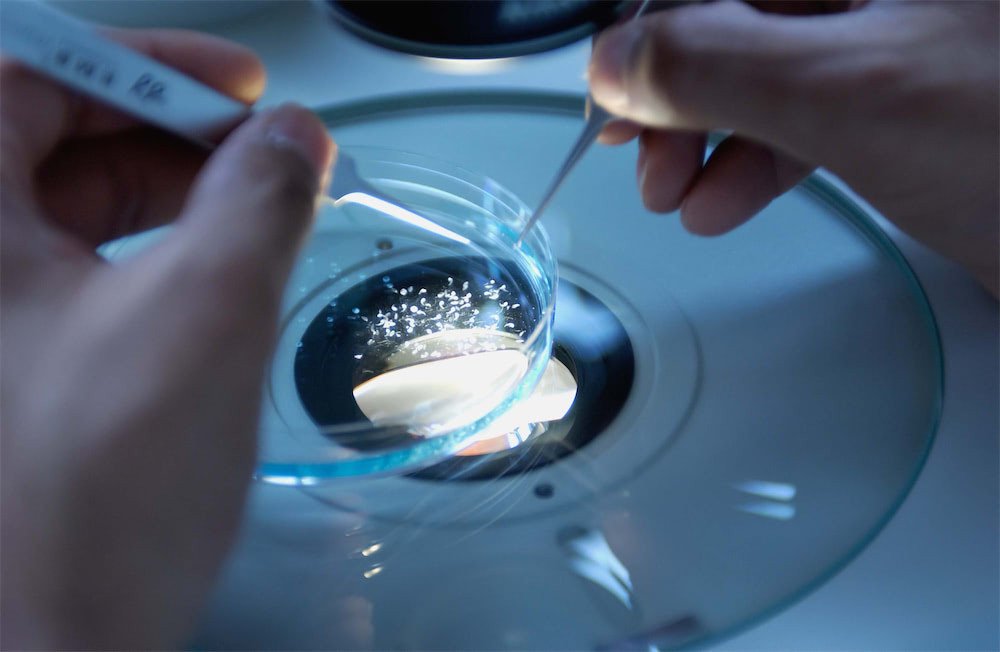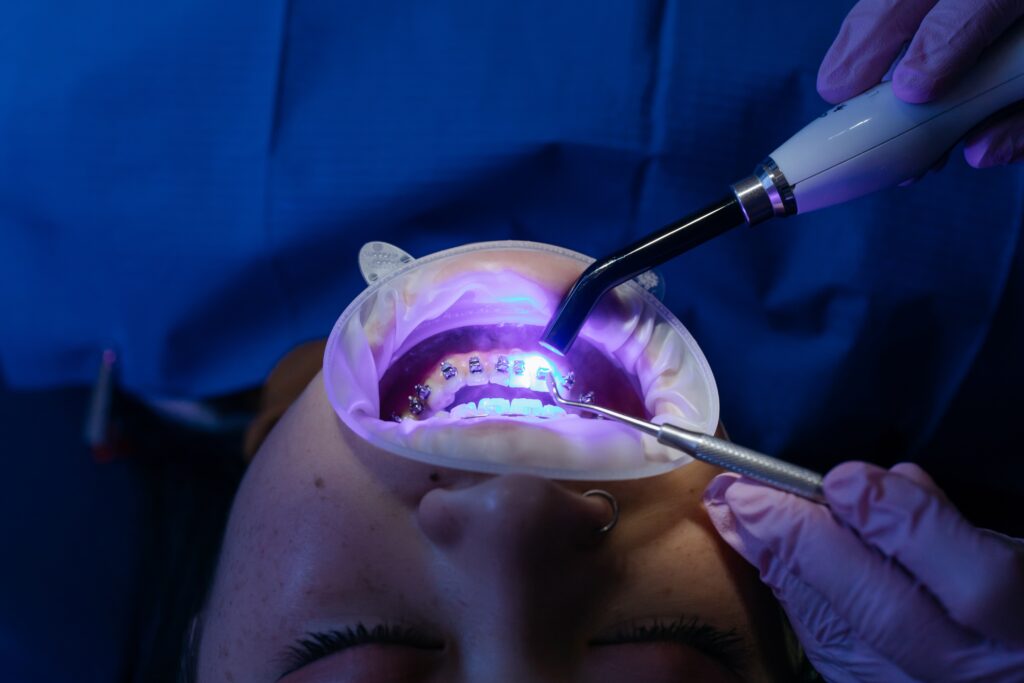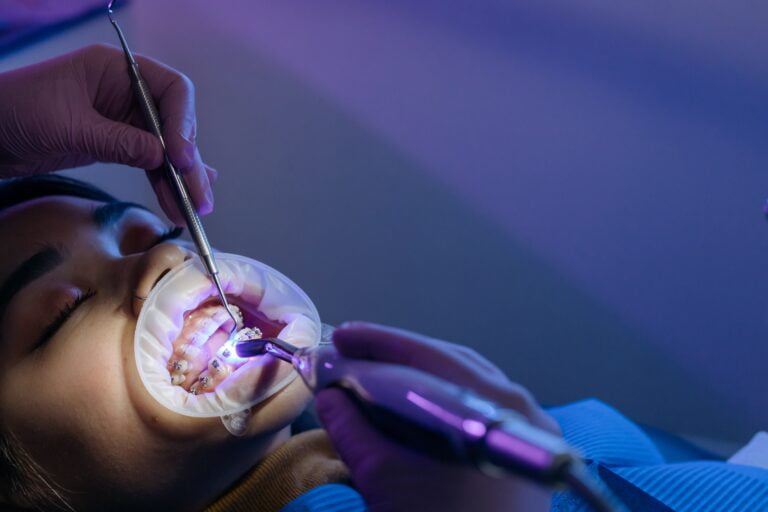This blog post highlights the significance of intraoral mucosal scans for dental health assessment. By examining the mucosal tissues in the mouth, these scans aid in the early detection of oral diseases like oral cancer and infections. With their non-invasive nature and efficiency, they enable timely interventions and improved patient outcomes. Intraoral mucosal scans are an essential tool in routine dental examinations, providing comprehensive assessments and supporting preventive care efforts. By understanding the benefits and applications of these scans, dental professionals can enhance their ability to diagnose and monitor oral conditions, promoting overall oral health and well-being.

Understanding Intraoral Mucosal Scans
Intraoral mucosal scans are vital for assessing dental health. Using specialised cameras and imaging systems, these scans examine the mucosal tissues inside the mouth, detecting oral diseases and abnormalities. What sets them apart is their non-invasive nature, ensuring patient comfort and safety. By providing detailed images and insights, intraoral mucosal scans aid in early detection, accurate diagnosis, and effective treatment planning. They play a crucial role in improving dental health outcomes and promoting overall oral well-being.
Advantages of Intraoral Mucosal Scans
Mucosal scans provide a comprehensive view of the oral cavity, enabling early identification of oral health issues like oral cancer, gum disease, and infections. By examining the mucosal tissues, these scans offer valuable insights into overall oral health, aiding in the detection of abnormalities and signs of disease at an early stage. This enhances diagnostic accuracy and facilitates targeted treatment planning. The ability to detect and address oral health issues promptly improves patient outcomes, ensuring timely interventions and appropriate care for maintaining optimal oral health. Mucosal scans play a vital role in preventive dental care and promoting overall well-being.
Early Detection of Oral Cancer
Early detection is vital in the treatment of oral cancer, as it increases the chances of successful outcomes. Intraoral mucosal scans play a pivotal role in identifying suspicious lesions and abnormalities that could indicate the presence of oral cancer. By utilising detailed images and insights provided by these scans, dentists can pinpoint areas of concern and determine if further evaluation or biopsy is necessary. This early detection allows for timely interventions, potentially saving lives and improving prognosis. By promptly initiating appropriate treatments, such as surgery, radiation therapy, or chemotherapy, the overall effectiveness of oral cancer treatment can be significantly enhanced. Intraoral mucosal scans serve as a powerful tool in the fight against oral cancer, enabling dentists to detect and address the disease at its earliest stages, ultimately making a life-saving impact on patients.
Assessing Gum Health and Periodontal Disease
In assessing gum health, intraoral mucosal scans play a vital role. These scans help identify signs of periodontal diseases like gum inflammation, recession, and pocket formation. Early detection of these signs allows for proactive treatment and prevention of gum-related issues. By capturing detailed images and providing insights into the condition of the gums, dental professionals can develop targeted treatment plans and interventions to maintain optimal gum health. Intraoral mucosal scans empower dental teams to address gum problems promptly, promoting long-term gum health and preventing further complications down the line.

Monitoring Healing Progress and Treatment Outcomes
Intraoral mucosal scans are instrumental in monitoring healing progress after dental procedures. They effectively assess the effectiveness of treatments such as dental implants, root canal therapy, or oral surgery. By examining the mucosal tissues, these scans provide insights into the healing process, enabling dental professionals to identify any issues or complications. This allows for timely adjustments or modifications to treatment plans as necessary, ensuring optimal outcomes. With their non-invasive nature, intraoral mucosal scans offer a convenient and efficient means of tracking healing progress and promoting successful recovery post-dental procedures.
Patient Education and Engagement
Intraoral mucosal scans provide valuable educational benefits for patients, enhancing their understanding of oral health conditions and treatment options. By visualising detailed images of the oral cavity, patients can gain a clearer comprehension of the specific issues affecting their oral health. This visual aid facilitates effective communication between dental professionals and patients, enabling comprehensive explanations of diagnoses, treatment plans, and potential outcomes. Patients become active participants in their dental care, making informed decisions about their oral health. Additionally, intraoral mucosal scans promote proactive dental care and oral hygiene practices by emphasising the significance of regular check-ups, preventive measures, and maintaining good oral hygiene habits. By empowering patients through education and engagement, these scans contribute to improved oral health outcomes and foster a sense of personal responsibility for oral care.

Improving Dentist-Patient Communication
The visual representation offered by intraoral mucosal scans greatly aids communication between dentists and patients. By presenting detailed images of the oral cavity, these scans facilitate clearer discussions regarding oral health conditions and treatment options. Dentists can visually demonstrate specific issues, improving patient understanding of their diagnoses and treatment plans. This visual aid strengthens the dentist-patient relationship by fostering trust and transparency. Patients feel more involved in their dental care as they actively participate in decision-making. Utilising intraoral mucosal scans enhances treatment planning, increases patient satisfaction, and promotes long-term oral health success by improving the overall dental experience.
The Future of Intraoral Mucosal Scans
The field of intraoral mucosal scans is witnessing exciting advancements and emerging technologies that have the potential to transform routine dental care. Anticipated developments include more sophisticated imaging systems with higher resolution capabilities, real-time imaging, and improved visualisation of oral tissues. These advancements will likely lead to broader integration and utilisation of intraoral mucosal scans in dental practices. As dental professionals recognize the benefits of this diagnostic tool, its use is expected to become more commonplace.
By providing detailed and accurate information about oral health conditions, intraoral mucosal scans enable early detection and precise treatment planning. They also enhance patient communication and engagement, resulting in improved treatment outcomes and increased patient satisfaction. With continuous technological progress, the evolution of intraoral mucosal scans promises even more precise and efficient diagnostic capabilities, paving the way for enhanced dental care and improved patient experiences.


